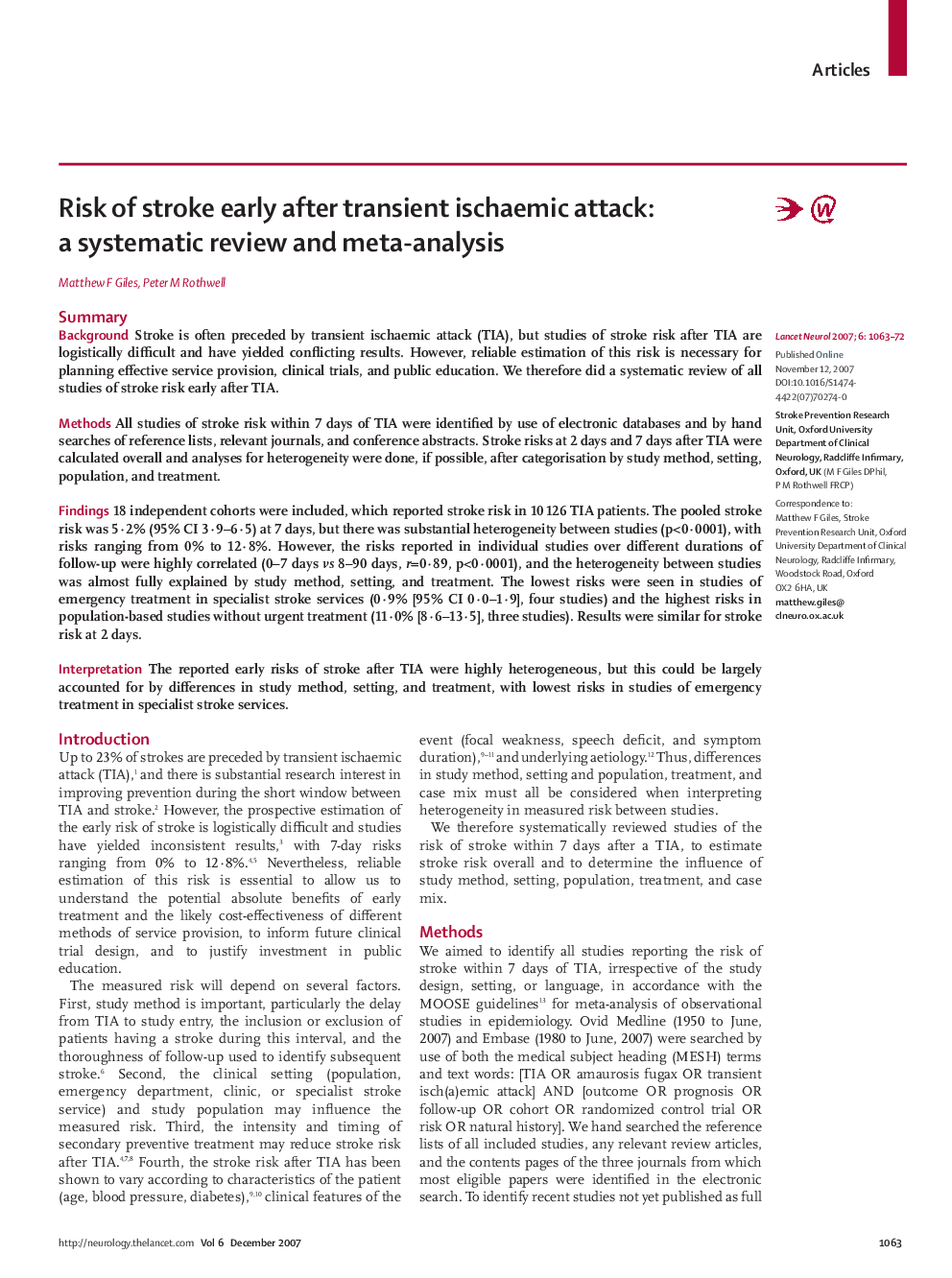| Article ID | Journal | Published Year | Pages | File Type |
|---|---|---|---|---|
| 3067575 | The Lancet Neurology | 2007 | 10 Pages |
SummaryBackgroundStroke is often preceded by transient ischaemic attack (TIA), but studies of stroke risk after TIA are logistically difficult and have yielded conflicting results. However, reliable estimation of this risk is necessary for planning effective service provision, clinical trials, and public education. We therefore did a systematic review of all studies of stroke risk early after TIA.MethodsAll studies of stroke risk within 7 days of TIA were identified by use of electronic databases and by hand searches of reference lists, relevant journals, and conference abstracts. Stroke risks at 2 days and 7 days after TIA were calculated overall and analyses for heterogeneity were done, if possible, after categorisation by study method, setting, population, and treatment.Findings18 independent cohorts were included, which reported stroke risk in 10 126 TIA patients. The pooled stroke risk was 5·2% (95% CI 3·9–6·5) at 7 days, but there was substantial heterogeneity between studies (p<0·0001), with risks ranging from 0% to 12·8%. However, the risks reported in individual studies over different durations of follow-up were highly correlated (0–7 days vs 8–90 days, r=0·89, p<0·0001), and the heterogeneity between studies was almost fully explained by study method, setting, and treatment. The lowest risks were seen in studies of emergency treatment in specialist stroke services (0·9% [95% CI 0·0–1·9], four studies) and the highest risks in population-based studies without urgent treatment (11·0% [8·6–13·5], three studies). Results were similar for stroke risk at 2 days.InterpretationThe reported early risks of stroke after TIA were highly heterogeneous, but this could be largely accounted for by differences in study method, setting, and treatment, with lowest risks in studies of emergency treatment in specialist stroke services.
